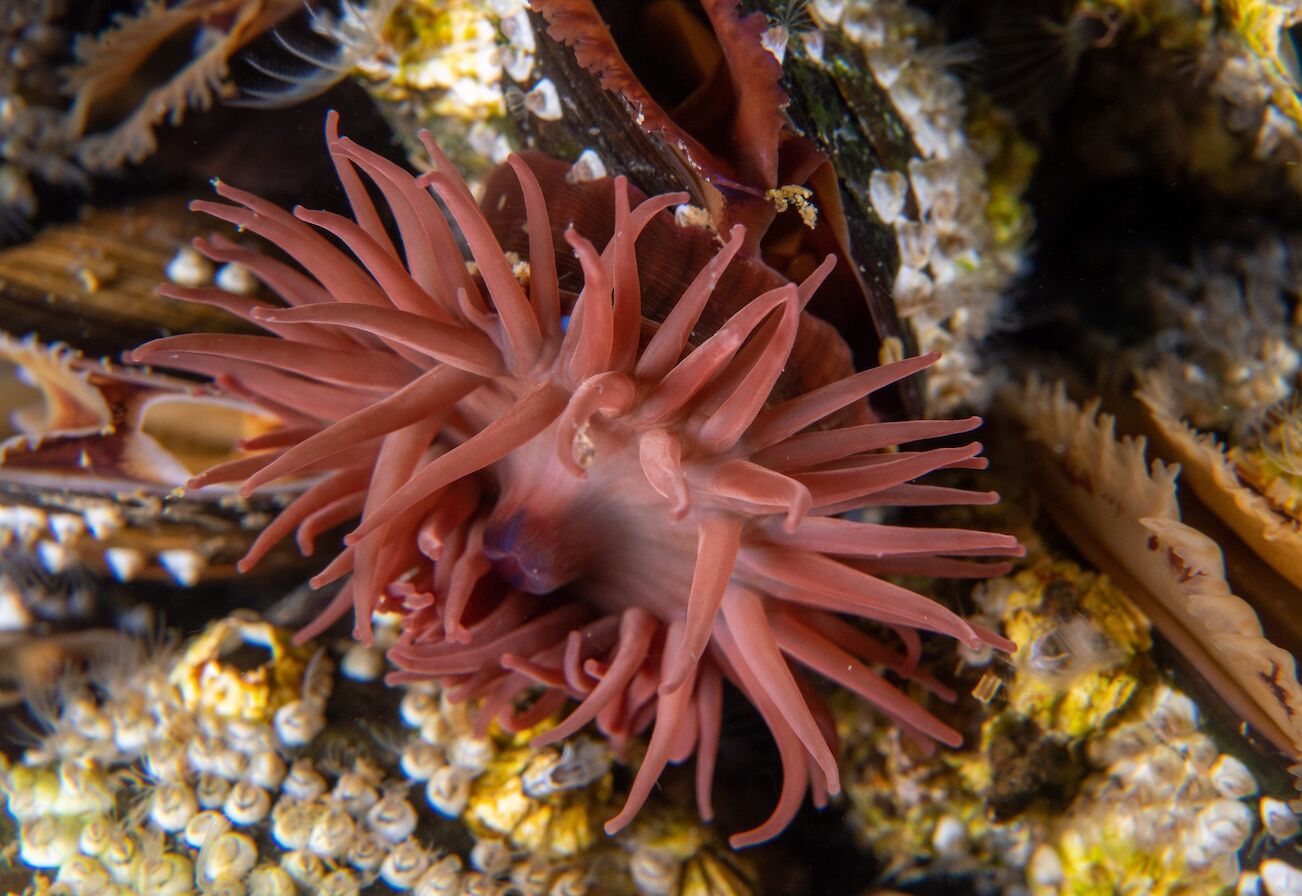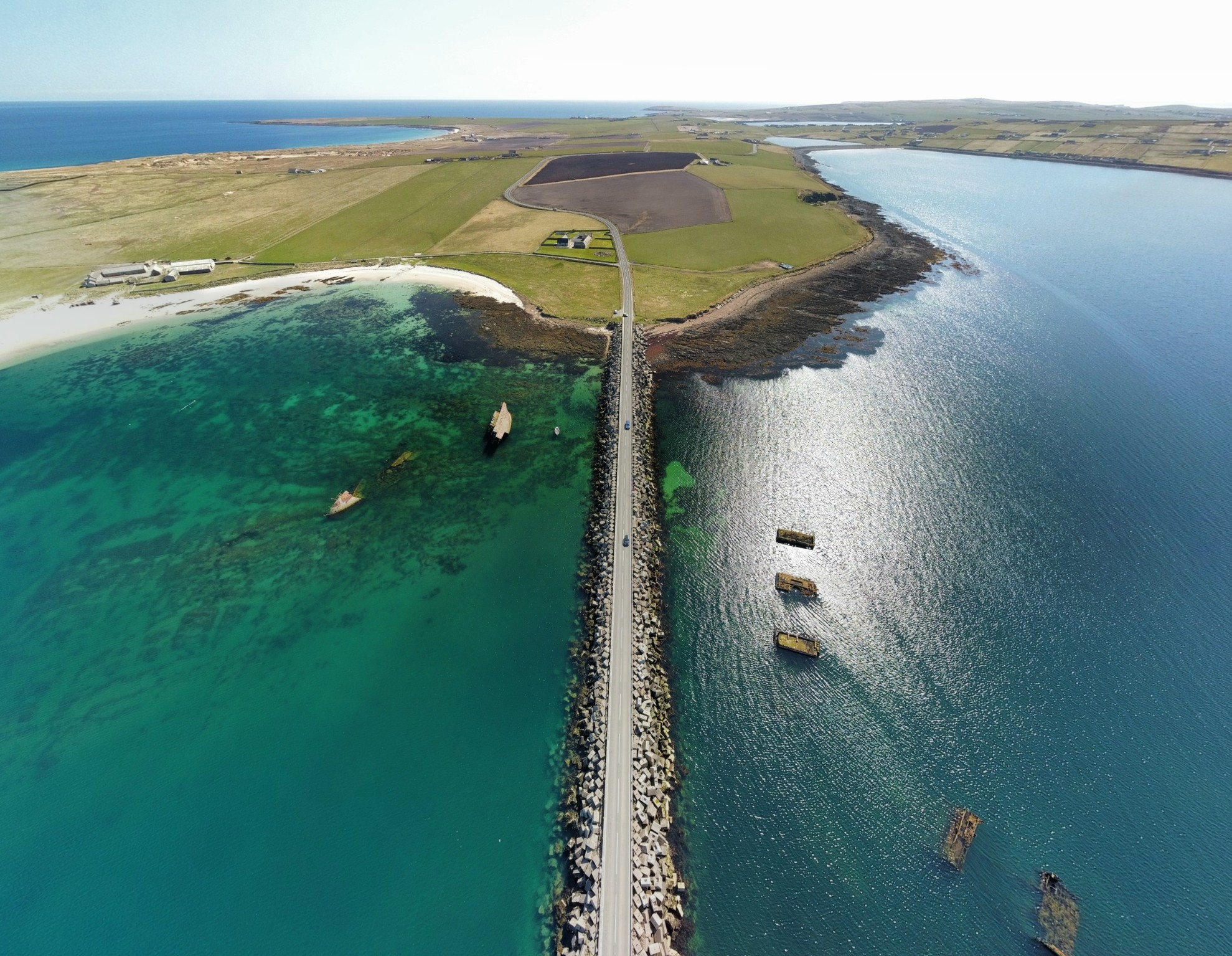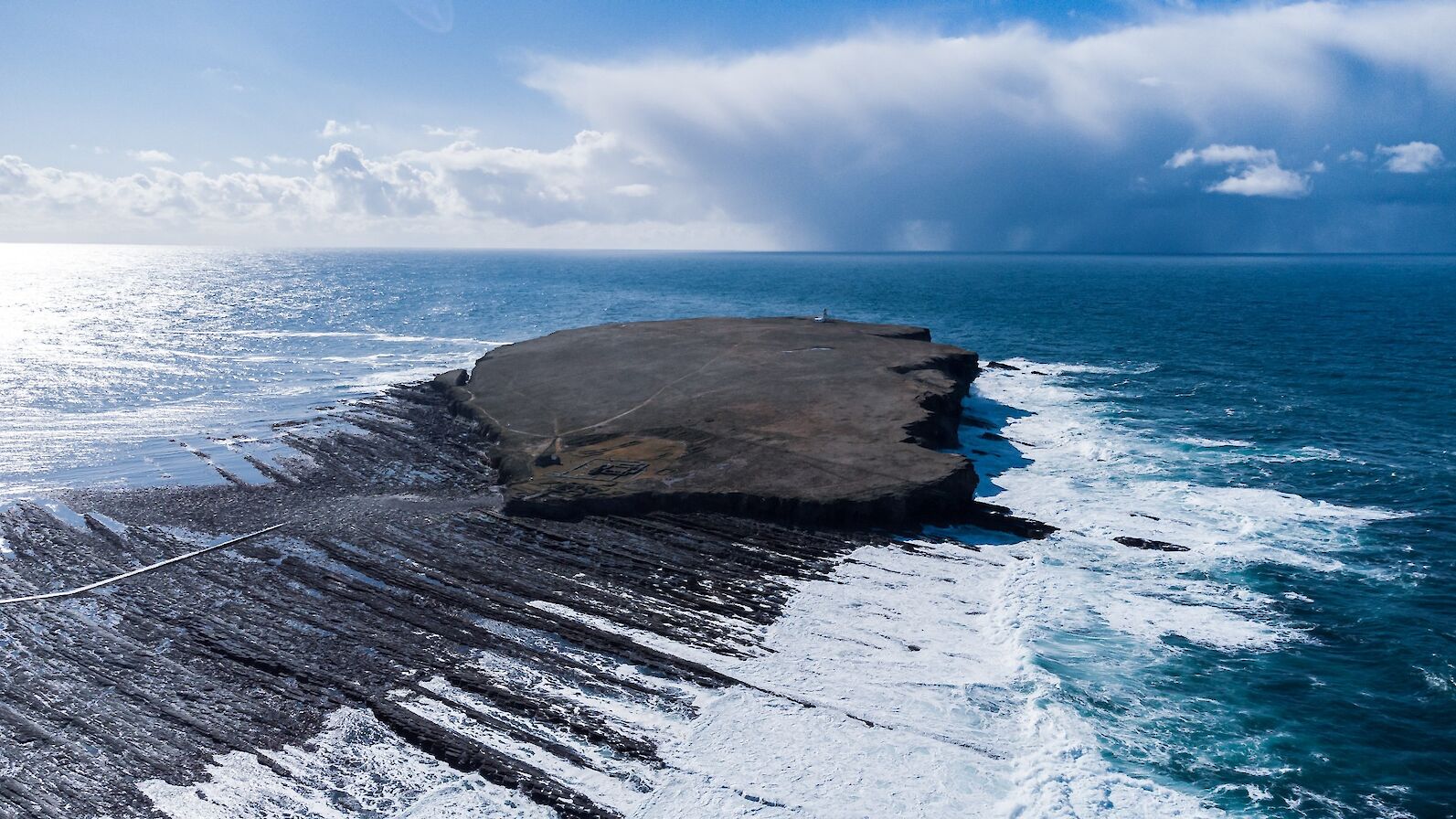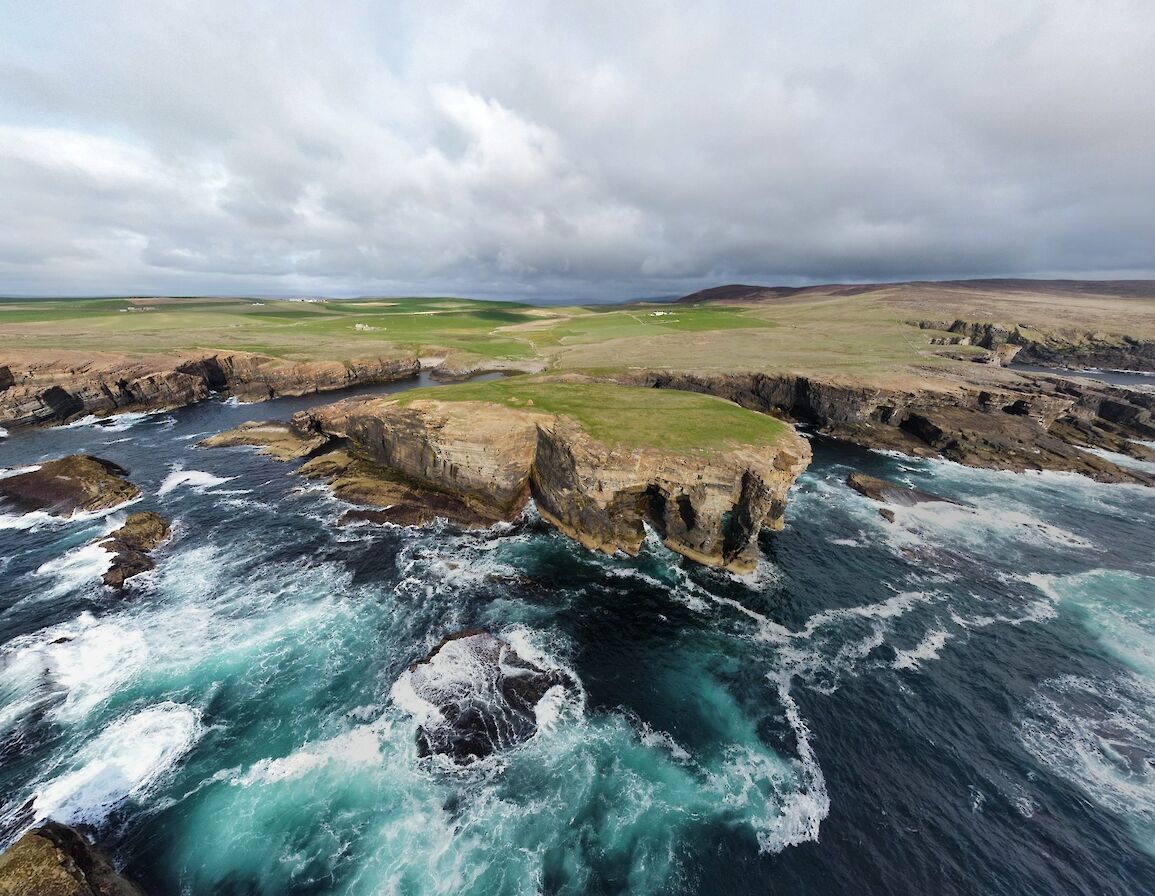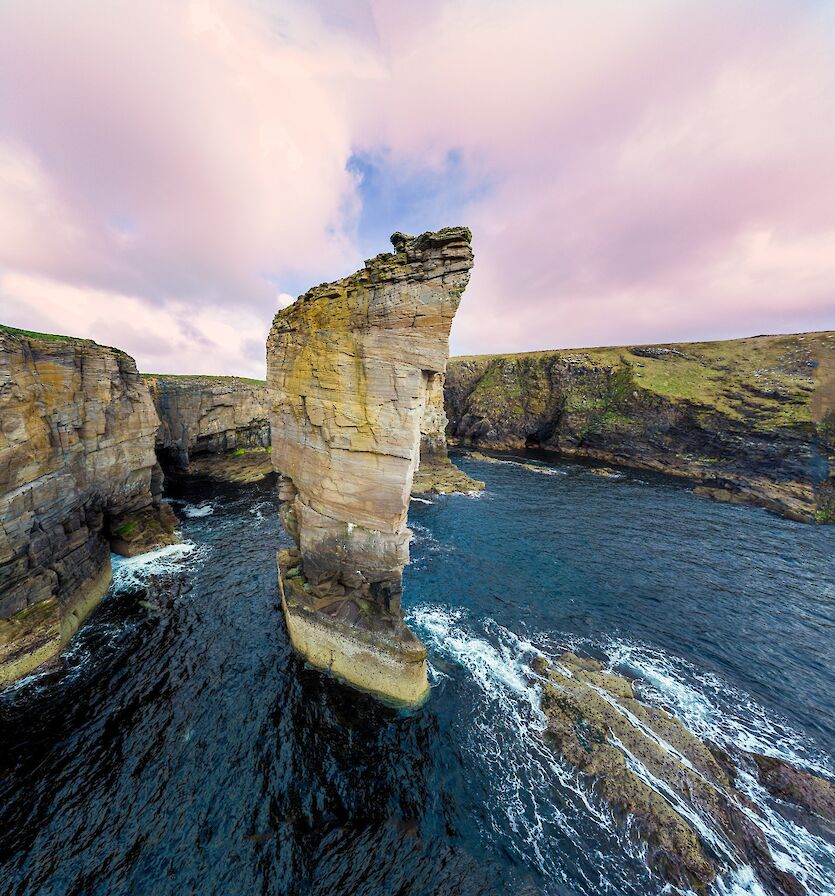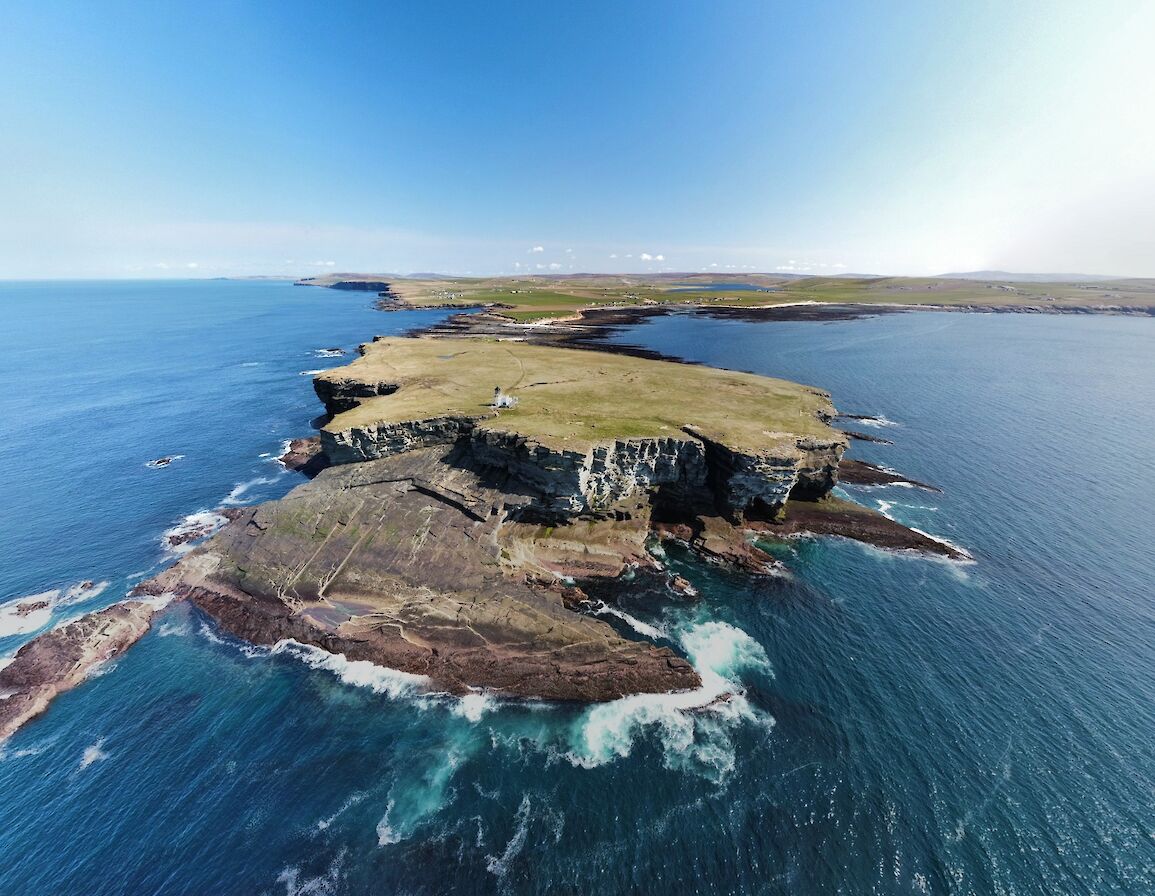Hello and welcome to the June 2021 Newsletter from Orkney.com.
With the islands moving into Level One of coronavirus restrictions, there is a sense that life is finally starting to return to some kind of normality here.
If you’re planning a trip to Orkney this summer, make sure you check any restrictions on travel from your area, and read our COVID-19 section for all the latest information. We’re also posting plenty of visitor ideas, inspiration and travel tips on our social media pages too.
In the meantime, we hope you enjoy our latest update on life in Orkney.
Latest news
Covers to come off at the Ness
 One of the most fascinating archaeological sites in Orkney is set to reopen this summer for the first time since 2019. Excavation work at the Ness of Brodgar in the heart of our Neolithic landscape will begin later this month, with visitors welcome between June 30 and August 11. The dig was postponed in 2020 due to COVID-19, but members of the public will be able to see archaeologists uncovering thousands of years of history at the site once again.
One of the most fascinating archaeological sites in Orkney is set to reopen this summer for the first time since 2019. Excavation work at the Ness of Brodgar in the heart of our Neolithic landscape will begin later this month, with visitors welcome between June 30 and August 11. The dig was postponed in 2020 due to COVID-19, but members of the public will be able to see archaeologists uncovering thousands of years of history at the site once again.
Top tips for travelling safely
 We’re looking forward to welcoming you back to Orkney over the coming weeks and month, and we know that you’ll do everything you can to keep yourselves and our community safe. So, how do you do that, and how can you still see the very best the islands have to offer? We’ve asked Orkney-based travel blogger, Susanne Arbuckle, to share some of her tips for visiting the islands this year.
We’re looking forward to welcoming you back to Orkney over the coming weeks and month, and we know that you’ll do everything you can to keep yourselves and our community safe. So, how do you do that, and how can you still see the very best the islands have to offer? We’ve asked Orkney-based travel blogger, Susanne Arbuckle, to share some of her tips for visiting the islands this year.
Midsummer return for festival
 After an unplanned year off, the St Magnus International Festival will return in style this month. A mixed programme of virtual events and live performances will be held between June 18 and 23, showcasing Orkney, its landscape, seascape, history and heritage. Performances are being filmed at the moment and will be broadcast online. If restrictions permit, a series of outdoor ‘live’ events are being planned too. Find out how you can be part of it by visiting the festival’s official website.
After an unplanned year off, the St Magnus International Festival will return in style this month. A mixed programme of virtual events and live performances will be held between June 18 and 23, showcasing Orkney, its landscape, seascape, history and heritage. Performances are being filmed at the moment and will be broadcast online. If restrictions permit, a series of outdoor ‘live’ events are being planned too. Find out how you can be part of it by visiting the festival’s official website.
New home for local jewellery firm
 Orkney jewellery designer, Alison Moore, is celebrating ten years in business with a move into new, larger premises. A stylish street-front shop and expanded workshop area have all been created in the village of Dounby through the redevelopment of a local building firm’s former property. The expansion has created two additional jobs and showcases the designer’s full range of jewellery. Visitors can now also watch the jewellery making process in Alison’s workshop, through a special viewing window next to the bright, bespoke display cabinets.
Orkney jewellery designer, Alison Moore, is celebrating ten years in business with a move into new, larger premises. A stylish street-front shop and expanded workshop area have all been created in the village of Dounby through the redevelopment of a local building firm’s former property. The expansion has created two additional jobs and showcases the designer’s full range of jewellery. Visitors can now also watch the jewellery making process in Alison’s workshop, through a special viewing window next to the bright, bespoke display cabinets.
Join us on Instagram
 Join us on Instagram where we post plenty of stunning shots from the islands. Make sure you follow Visit Orkney to see new images every week, and you can take part too. Tag your own images and use #VisitOrkney and #LoveOrkney to keep in touch.
Join us on Instagram where we post plenty of stunning shots from the islands. Make sure you follow Visit Orkney to see new images every week, and you can take part too. Tag your own images and use #VisitOrkney and #LoveOrkney to keep in touch.
Wild Orkney
Join local wildlife filmmaker Raymond Besant to uncover some of the natural world secrets of an Orcadian summer.
I feel like a bit of a broken record, saying ‘it must be summer soon’, or ‘by June the air will be warmer’…
What I can confirm is that the air is very much not warm. In fact, it’s cold and has been for months. The wind refuses to ditch north for some summer southerlies. Westerly? Nope, add northerly. Easterly isn’t much better, and guess what? There’s northerly in that too. So, even in sheltered spots, with any kind of breeze the hairs are standing on the back of my neck with a sudden chill.
I’ve been in the sea a lot this spring and whilst the air is still frigid, life underwater is very much in the groove. I’ve seen the plankton blooms associated with spring arrive and recently shoals of sand eels have exploded from the sand underneath me as I swim over the seabed. Kelp is flourishing, jellyfish have drifted past and I’ve even been fortunate enough to see a beautiful cephalopod called a little cuttle, which does the opposite of the sand eel when it’s disturbed; this animal drops itself into the sand and uses its dexterous tentacles to cover itself with grains of sand.
But what about above the surface? I decided to take a walk along one of my favourite and most familiar bits of coast to gauge how life is faring so far. Summer is upon us but it just doesn’t feel like it. The Brough of Birsay is a small island off the coast of Orkney’s north-west mainland, a draw for locals and visitors alike. This will sound ultra-parochial but within Orkney residents can be quite territorial, preferring where they are brought up as ‘the best’. I grew up in Kirkwall so I’m a ‘toonie’ to anyone living outside its borders. ‘West is best’ it’s said by those from the parishes of Sandwick, Harray and the like. But when I was growing up and getting into birdwatching, I thought west really was best and liked nothing more than a visit to Birsay and the Brough in particular if the tide allowed.

To visit the island, you have to be patient and are bound by the rhythm of the tide. So, I’ve looked at the tide times online and timed my visit to coincide with low water. Parking at Birsay village, I get out of my vehicle and I’m met by something unexpected. A wall of fog. The island might be within grasp but I can barely see it. No matter, the air is still and it has its own charm. As I walk along the shore heading north-east, I can hear a familiar sound, but only familiar at this time of year. For the uninitiated it sounds a little like a curlew but it’s just not quite right. I look up and see a shadow of a bird fly overhead, ostensibly a curlew…but not. It’s a whimbrel, like a pocket version of the curlew. An altogether smaller bird, with a shorter bill and a nicely defined eye stripe, it’s one of my favourite migrants. A few pairs may linger on the moors here to breed but the overwhelming majority of these beautiful wading birds are heading for Iceland.
As I admire two harbour seals trying their best to remain where they want to remain, banana-like on their chosen outcrops, I am hit with something else, and this time it’s not fog. It’s a smell. These shores bear the brunt of storms, with seaweed freshly deposited on the sand throughout the winter. But now it’s broken down and is ideal for invertebrates to flourish. A quick look through the binoculars reveals busy waders manically working their way through the weed, kelp-fly larvae providing a feast for dunlin and turnstones. The sickly-sweet weed is too much for me so I don’t linger. Instead, it’s another sound that catches my ear, one much softer than the harsh trilling of the whimbrel.
‘Oo-ooh’ ‘Oo-oooh’ is the sound of the eider duck. There must be around 30 birds in the bay and this is an altogether more serene scene than the one I witnessed a couple of months ago when these birds were in full courtship mode, the males throwing their heads back in a comical looking attempt at impressing the females. Now though, all these birds have paired up and are going about the business of keeping their feathers in good condition.
I see a small bird in the rotting weed but can’t quite make it out as it busily roots around for food. It’s only when it takes off and flashes its bright white rump that I recognise it as a wheatear. What strikes me is how similar the colour of its plumage is to that of the weed it’s sitting amongst – all greys and blacks and charcoals, with a peach blush on its throat. What a stunning little bird.
I’m quite close to it now and fear I have scared it off by getting too close for a photograph. But I needn’t have worried. It was spooked by a passing ringed plover that alights on a rock nearby. Like the wheatear, it too has a ‘robber mask’ of sorts. The softness of its beige plumage is apparent at this close range but it contrasts beautifully with the black band around its neck and the vibrant orange bill, dipped in ink.
By now the fog has lifted a little and I can see fulmars swirling at the top of the cliff edge, with grainy-looking waves crashing below them, adding to the mist and already salt laden air. The wind has been light of late but enough to create swell, its final destination the cliffs below the fulmar’s stiff wings.

But I’ve made a decision. As much as I love the Brough, I’m not going to cross the causeway and set foot on the island. Perhaps its main draw, above even the archaeological remains, is a small seabird. I’m playing it down really as it’s our most colourful seabird…it is of course, the puffin. The cliffs on the north east side of the island are one of the most reliable places in Orkney for sightings of puffins. Now, don’t get me wrong, I like them, they’re full of character and tough little things, spending their winters way out in the ocean. They are a bird to be admired. But I’ve never seen more than five puffins here at one time. Through my job I’ve been spoiled. I once filmed thousands of puffins flying in circles, an anti-predator behaviour, on the Isle of May in the Firth of Forth, so the sight of a handful of puffins on a cliff below me doesn’t really get my juices going anymore!
However, not going to the island isn’t a disadvantage to anyone interested in the natural world - the opposite, in fact. The rocky shoreline on the way to the Brough holds some of the best rock-pooling opportunities in Orkney. Seen from the air you can see why, with great long fingers of rock exposed at low tide, leaving behind deeper pockets for us to explore. This is a fantastic example of what an exposed, higher energy, shoreline looks like. Wracks do well here, also known as fucoid seaweeds. Serrated wrack in particular thrives in the clear cold water.
Like most other forms of wildlife watching, it pays to just slow down a little before going in feet first, as it were, with your net and bucket. Just looking in the pools reveals lots of hermit crabs, shrimps and a goby that darts back under the weed before you can get a proper look at it. What aren’t moving very fast though are beadlet anemones. Blood red blobs out of the water, their beautiful fleshy tentacles grab passing food in the deeper pools.
Look out for starfish, brittlestars, butterfish and shanny, one of the larger blennies. And then I spot a real treat, and something of a rock pooling monster - a short spined sea scorpion trying its best to remain unnoticed. This is the larger of the two species of scorpionfish found here. The other, the long spined, is a much smaller fish and more likely to be found in these pools, so I’m really pleased to have seen this bigger fish. It will no doubt be happy when the tide comes back in, replenishing its pool and allowing it to move on.
As great as the pools are for exploration, do bear in mind that despite being out of the water, these rocks are still a habitat covered in thousands of limpets and barnacles. Do your best to step on the bare bits, in between those countless molluscs and crustaceans that call this place their home.
Speaking of home, the tide is turning and though the sun came out momentarily to reveal the lighthouse at the top of the Brough, it has closed in again. That’s my ‘toonie’ cue to head back to Kirkwall.
Find out more about Raymond’s work via his official website. You can also find him on Facebook, Twitter and Instagram.
His new book, 'Naturally Orkney Volume 2' is out now, focusing on Orkney's coastline and all the sights and species that can be found there. You can order your copy online.
Focus on photography
Orkney has been home to many renewable energy students over recent years. One of them, Luke Evans, has also been studying our environment with his camera and is our featured photographer of the month.
My passion for photography began at the start of the pandemic in 2020. I was particularly interested in my partner’s photography work and this sparked a new hobby for me. With a love of hiking, I never thought about taking pictures before, but now photos give me the chance to revisit the memories from each hike when I sit down to post process the images.
I had always wanted a drone for aerial images, so I decided to purchase one in the hope that I could capture different perspectives to what I was used to. This also led me to acquiring a handheld camera to experiment with, which I have enjoyed since starting.
In the past year I have seen dramatic improvements in the way I capture a shot or shoot a video. Of course, being in Orkney, you are never too far away from an amazing scene. The islands are littered with excellent coastal paths, vertical cliffs, sea life and much more! In addition to the beauty of the islands, the weather adds another dimension to the atmosphere. It is possible to experience many seasons at one given period here, and that makes hiking and photography stimulating.
I currently use a Mavic Pro and this drone allows me to capture the coastal environment from a difference perspective. This addition has also opened up a new element to hiking, as I now look for the perfect spot to deploy and roam around places that are not easily accessible on foot. I also use a Nikon d7200, which is not the lightest camera but it is still worth the extra luggage.
For me, there is no one special place to photograph on Orkney. I draw inspiration and excitement from capturing the ocean and the cliffs around the islands, so if I had to pick somewhere, it would be Birsay. I find at any period this coastal environment is always changing and I love capturing the waves crashing against the cliffs. This proves difficult when the wind is against you, but that is just part of the experience.
Orkney is one of the easiest places to take photos. There is no shortage of landscapes to capture here, the beauty can be captured on any device available and the views are easily accessible, you don’t have to drive or walk far before you are at the dramatic coastline.
Once you visit Orkney, you will be back. Although the islands are relatively small, the sights here have a special presence which is just calming and inviting. The nature that surrounds the islands adds to the character too, especially puffins, which are just beautiful creatures. I would recommend Orkney - the memories you capture here will become a part of your life when you leave.
See more of Luke’s images on his Instagram page.
And finally...
Thank you for taking the time to read our latest newsletter. If you’re planning to visit the islands this year, take a look at our COVID-19 section to make sure you’re up-to-date with all the latest news and advice.
Remember, restrictions can change quickly, so do double check that you can visit Orkney from your area before travelling.
We’re always keen to hear from you too - share your news, views and comments on the newsletter, Orkney.com and your Orkney experiences with us on Facebook, Twitter, Instagram or E-mail.
In the meantime, it's cheerio from Orkney for now.



